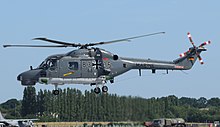|
German Navy
The German Navy (German: Deutsche Marine, pronounced [ˈdɔʏtʃə maˈʁiːnə] ⓘ) is part of the unified Bundeswehr (Federal Defense), the German Armed Forces. The German Navy was originally known as the Bundesmarine (Federal Navy) from 1956 to 1995, when Deutsche Marine (German Navy) became the official name with respect to the 1990 incorporation of the East German Volksmarine (People's Navy). It is deeply integrated into the NATO alliance. Its primary mission is protection of Germany's territorial waters and maritime infrastructure as well as sea lines of communication. Apart from this, the German Navy participates in peacekeeping operations, and renders humanitarian assistance and disaster relief. It also participates in anti-piracy operations.[2] HistoryGerman Naval history has its roots in the naval history of the Holy Roman Empire, to which the Dutch Navy and even the Spanish Navy once belonged. Proper German language early maritime history is represented by the Hanseatic League and the Brandenburg Navy, later Prussian Navy. The modern German Navy traces its roots back to the Reichsflotte (Imperial Fleet) of the revolutionary era of 1848–52. The Reichsflotte was the first German navy to sail under the black-red-gold flag. Founded on 14 June 1848 by the orders of the democratically elected Frankfurt Parliament, the Reichsflotte's brief existence ended with the failure of the revolution and it was disbanded on 2 April 1852; thus, the modern day navy celebrates its birthday on 14 June. The small Prussian Navy evolved in 1867 into the North German Federal Navy, which was mainly for coast defence. It became the Imperial German Navy in 1871. From 1919 to 1935, only a small Reichsmarine was permitted. Under Nazi Germany, it was transformed into the Kriegsmarine, which was disbanded in 1945 after the end of World War II in Europe.  Between May 1945 and 1956, the German Mine Sweeping Administration and its successor organizations, made up of former Kriegsmarine members, became something of a transition stage for the German navy, allowing the future Marine to draw on recently experienced personnel upon its formation. Also, from 1949 to 1952 the United States Navy maintained the Naval Historical Team in Bremerhaven. This group of former Kriegsmarine officers acting as historical and tactical consultants to the Americans, was significant in establishing a German element in the NATO senior naval staff. In 1956, with West Germany's accession to NATO, the Bundesmarine (Federal Navy), as the navy was known colloquially, was formally established. In the same year the East German Volkspolizei See (literally People's Police Sea) became the Volksmarine (People's Navy). During the Cold War all of the German Navy's combat vessels were assigned to NATO's Allied Forces Baltic Approaches's naval command NAVBALTAP. With the accession of former East Germany's states to the Federal Republic of Germany in 1990 the Volksmarine along with the whole National People's Army became part of the Bundeswehr. Since 1995 the name German Navy is used in international context, while the official name since 1956 remains Marine without any additions. As of August 2024, the strength of the navy is 15,531 men and women.[1] A number of naval forces have operated in different periods. See
Current operationsGerman warships permanently participate in all four NATO Maritime Groups. The German Navy is also engaged in operations against international terrorism such as Operation Enduring Freedom and NATO Operation Active Endeavour. Presently the largest operation the German Navy is participating in is UNIFIL off the coast of Lebanon. The German contribution to this operation is two frigates, four fast attack craft, and two auxiliary vessels. The naval component of UNIFIL has been under German command.[3] The navy operates a number of development and testing installations as part of an inter-service and international network. Among these is the Centre of Excellence for Operations in Confined and Shallow Waters (COE CSW), an affiliated centre of Allied Command Transformation. The COE CSW was established in April 2007 and officially accredited by NATO on 26 May 2009.[4] It is co-located with the staff of the German Flotilla 1 in Kiel whose Commander is double-hatted as Director, COE CSW. EquipmentShips and submarines In total, there are about 65 commissioned ships in the German Navy, including; 11 frigates, 5 corvettes, 2 minesweepers, 10 minehunters, 6 submarines, 11 replenishment ships and 20 miscellaneous auxiliary vessels. The displacement of the navy is 220,000 tonnes. Ships of the German Navy include:
In addition, the German Navy and the Royal Danish Navy are in cooperation in the "Ark Project". This agreement made the Ark Project responsible for the strategic sealift of German armed forces where the full-time charter of three roll-on-roll-off cargo and troop ships are ready for deployments. In addition, these ships are also kept available for the use of the other European NATO countries. The three vessels have a combined displacement of 60,000 tonnes.[6][7] Including these ships, the total ships' displacement available to the Deutsche Marine is 280,000 tonnes. Procurement of joint support ships (either two JSS800 for an amphibious group of 800 soldiers, or three smaller JSS400), was planned during the 1995–2010 period but the programme appears now to have been abandoned, not having been mentioned in two recent defence reviews. The larger ships would have been tasked for strategic troop transport and amphibious operations, and were to displace 27,000 to 30,000 tons for 800 soldiers.[8] AircraftThe naval air arm of the German Navy is called the Marinefliegerkommando. The Marinefliegerkommando operates 56 aircraft, in May 2021 it was announced that the German Navy intended to replace the P-3C aircraft with Boeing P-8 Poseidon MPA aircraft through a FMS agreement from 2025 onwards.[9] Structure   The German Navy is commanded by the Inspector of the Navy (Inspekteur der Marine) supported by the Navy Command (Marinekommando) in Rostock. Formations
RanksOfficers
Petty officers and enlisted seamen
Radio and communication stations
Future developments
See also
References
Further reading
External linksWikimedia Commons has media related to Deutsche Marine. |
|||||||||||||||||||||||||||||||||||||||||||||||||||||||||||||||||||||||||||||||||||||||||||||||||||||||||||||||||||||||||||||||||||||||||||||||||||||||||||||||||||||||||||||||||||||||||||||||||||||||||||||||||||||||||||||||||||||||||||||||||||||||||||||||||||||||||||||||||||||||||||||||||





























